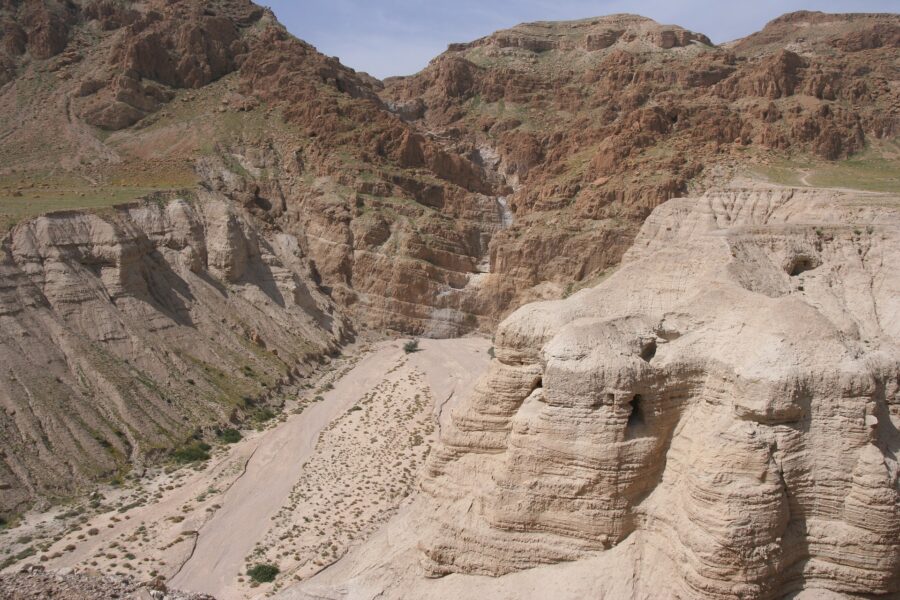In the Qumran text Rule of the Community it states, “They shall be judged by the first judgements in which the men of the Community began to be instructed, until the coming of the prophet and the Messiahs of Aaron and Israel” (1QS 9.10–11).1 We have here “the locus classicus for Qumran messianism.”2 Although this passage appears to be absent in the fragments of 4Q MS E (4Q259), it is nevertheless indicative of Qumran beliefs at some point.
According to the Gospel of John, priests and Levites were sent to John the Baptist to inquire of his identity. After John denied Messianic identity, it records, “καὶ ἠρώτησαν αὐτόν, Τί οὖν; Σύ Ἠλίας εἶ; καὶ λέγει, Οὐκ εἰμί. Ὁ προφήτης εἶ σύ; καὶ ἀπεκρίθη, Οὔ” (John 1:21). This could be translated as follows: “And they asked him, ‘What then? Are you Elijah?’ And he said, ‘I am not.’ ‘Are you the prophet?’ And he answered, ‘no.’”
John was asked if he is “the prophet” (Ὁ προφήτης). The articular form is significant. The anticipation of a unique coming prophet is a commonality between the Qumran sectarians and the Jews depicted in the Johannine literature. What differs is the expectation of the number of Messiahs. It is possible Qumran messianism expected a priestly Messiah and a kingly Messiah. The Gospel of John implies a single Messiah awaited by the Jews who were questioning John the Baptist (John 1:19, 24). Not all Jews had the same beliefs. Theology, eschatology, messianism, and even which textual documents were valued differed between Jews. Continuity and discontinuity can be observed between Jewish sects. This is one example of why we must be careful in speaking of ‘First Century Judaism’ or ‘Second Temple Judaism’. Indeed, general beliefs held by nearly all Jews could be observed and labeled as ‘Judaism’. Caution ought to be exercised in the application of Jewish texts to New Testament studies. Nevertheless, these Qumranic beliefs raise some intriguing questions: Does the New Testament exhibit any subtle subversion of dual messianism? Is Jesus depicted as Priest Messiah and King Messiah anywhere in the New Testament, thus fulfilling both roles anticipated by at least some Jews? I am am inclined to believe so as t dual or multiple messianism may have been characteristic of not only the Qumran sectarians, but also other Jewish people during the earliest centuries.
Endnotes
1. James H. Charlesworth, ed., Rule of the Community and Related Documents, Vol 1: The Dead Sea Scrolls: Hebrew, Aramaic, and Greek Texts With English Translations (Louisville: Westminster John Knox Press, 1994), 41.
2. Ibid., 41 n. 227.





Leave a Reply
Your email is safe with us.